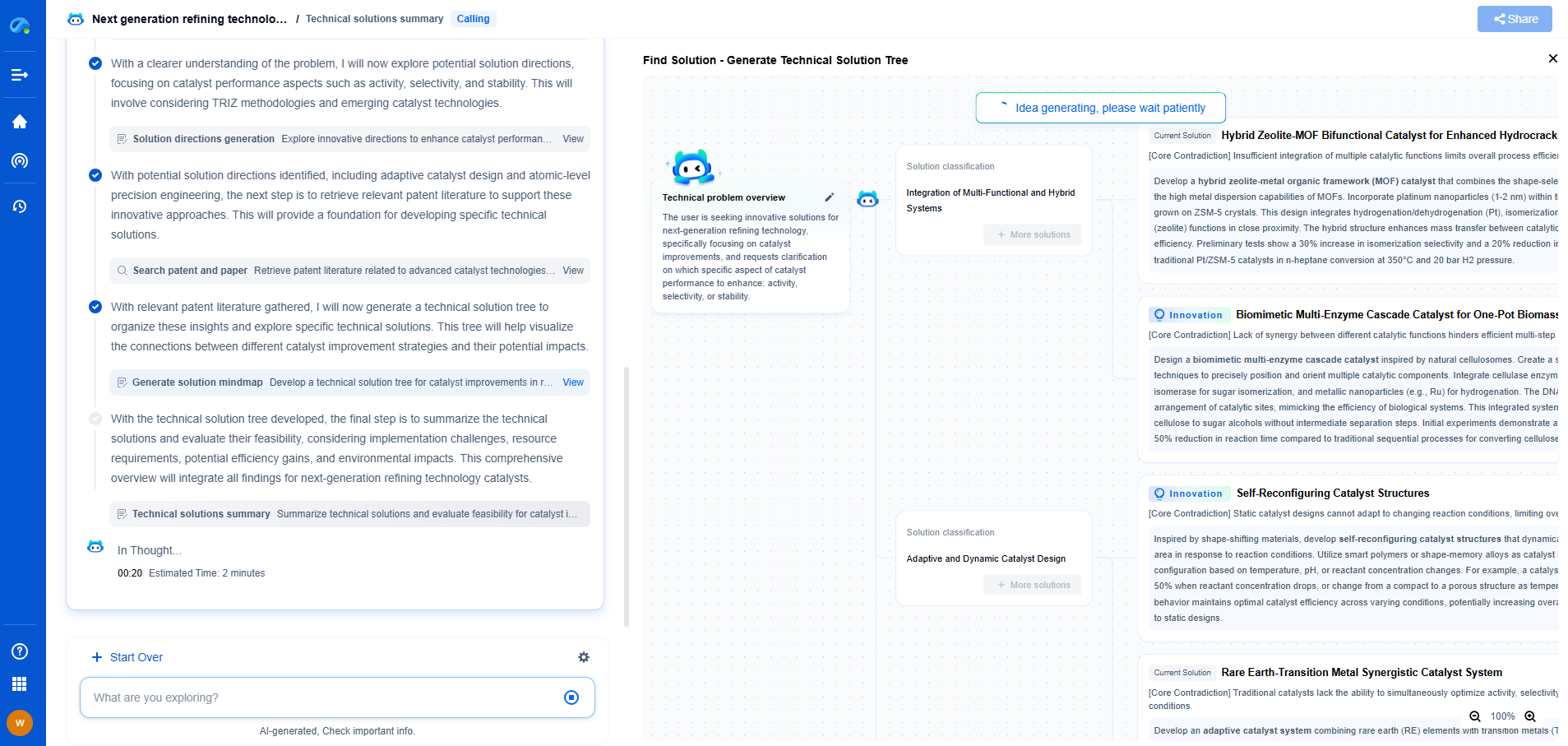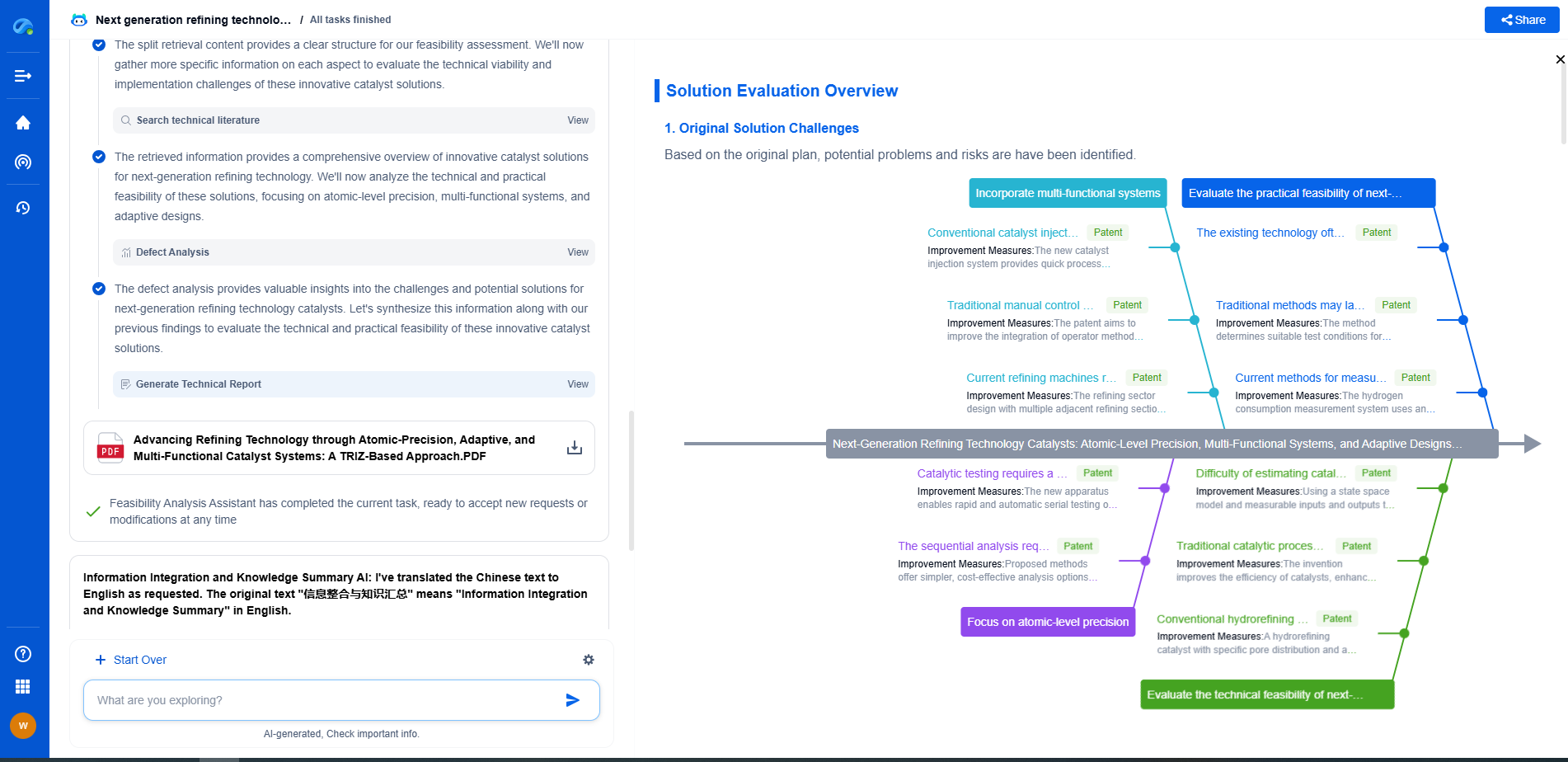Building a SCADA-Based Smart Grid Monitoring System: A Beginner’s Guide
JUL 2, 2025 |
The modern energy landscape is evolving rapidly, with the integration of advanced technologies into traditional power systems. A key component of this transformation is the Smart Grid, which combines information technology with electrical networks to enhance efficiency, reliability, and sustainability. Within this realm, Supervisory Control and Data Acquisition (SCADA) systems play a crucial role in monitoring and controlling grid operations. This guide aims to help beginners understand the essentials of building a SCADA-based Smart Grid monitoring system.
**Understanding SCADA Systems**
SCADA systems are centralized networks that collect and analyze real-time data to monitor and control industrial processes. In the context of a Smart Grid, SCADA systems gather data from various components, such as transformers, substations, and distribution lines. The primary objectives are to improve fault detection, optimize network performance, and ensure a reliable supply of electricity. Understanding how SCADA systems function is the first step in developing a comprehensive Smart Grid monitoring solution.
**Key Components of SCADA Systems**
1. **Remote Terminal Units (RTUs):** These devices collect data from sensors and equipment and transmit it to central SCADA servers. RTUs are essential for real-time data acquisition and are strategically placed across the grid network.
2. **Programmable Logic Controllers (PLCs):** These are specialized computers used for automating control tasks. They process the data received from RTUs and execute predefined control algorithms to maintain optimal grid operations.
3. **Human-Machine Interface (HMI):** The HMI is the user interface that allows operators to interact with the SCADA system. It presents data in a graphical format, enabling quick and accurate decision-making.
4. **Communication Infrastructure:** Reliable communication channels, such as fiber optics, wireless networks, or the internet, connect all components within the SCADA system. This infrastructure ensures seamless data transmission and communication.
**Steps to Develop a SCADA-Based Smart Grid Monitoring System**
1. **Define Objectives and Requirements:** Clearly identify the goals of your Smart Grid monitoring system. Consider factors such as data acquisition needs, performance metrics, and integration with existing infrastructure.
2. **Design the System Architecture:** Develop a comprehensive plan that outlines the layout of RTUs, PLCs, communication networks, and HMIs. Ensure the architecture supports scalability and future upgrades.
3. **Select Appropriate Hardware and Software:** Choose suitable RTU, PLC, and HMI solutions based on their compatibility, reliability, and cost-effectiveness. Opt for software platforms that support real-time data analytics and visualization.
4. **Implement Secure Communication Protocols:** Protect your SCADA system against cyber threats by implementing robust security measures. Use encrypted communication protocols and firewalls to safeguard data integrity and confidentiality.
5. **Integrate Advanced Data Analytics:** Leverage data analytics tools to transform raw data into actionable insights. Implement machine learning algorithms for predictive maintenance and demand forecasting.
6. **Test and Validate the System:** Conduct thorough testing to ensure the system meets all functional requirements and performs reliably under various conditions. Validate data accuracy and system responsiveness.
7. **Train Personnel and Conduct Maintenance:** Train operators and technicians on the system's functionalities and maintenance procedures. Regular maintenance is crucial to ensure continuous and efficient system operation.
**Challenges and Considerations**
Building a SCADA-based Smart Grid monitoring system comes with its challenges. Considerations such as interoperability between different equipment vendors, data privacy concerns, and the high initial investment cost can pose significant hurdles. Address these challenges by adopting industry standards, using open-source technologies, and planning for phased implementation to distribute costs.
**Conclusion**
Developing a SCADA-based Smart Grid monitoring system requires a comprehensive understanding of both SCADA technology and electrical grid operations. By following a structured approach to system design and implementation, you can create an efficient and reliable monitoring solution that enhances the performance and resilience of modern power networks. Embrace the potential of SCADA and Smart Grids to contribute to a more sustainable and reliable energy future.
Ready to Reinvent How You Work on Control Systems?
Designing, analyzing, and optimizing control systems involves complex decision-making, from selecting the right sensor configurations to ensuring robust fault tolerance and interoperability. If you’re spending countless hours digging through documentation, standards, patents, or simulation results — it's time for a smarter way to work.
Patsnap Eureka is your intelligent AI Agent, purpose-built for R&D and IP professionals in high-tech industries. Whether you're developing next-gen motion controllers, debugging signal integrity issues, or navigating complex regulatory and patent landscapes in industrial automation, Eureka helps you cut through technical noise and surface the insights that matter—faster.
👉 Experience Patsnap Eureka today — Power up your Control Systems innovation with AI intelligence built for engineers and IP minds.
- R&D
- Intellectual Property
- Life Sciences
- Materials
- Tech Scout
- Unparalleled Data Quality
- Higher Quality Content
- 60% Fewer Hallucinations
Browse by: Latest US Patents, China's latest patents, Technical Efficacy Thesaurus, Application Domain, Technology Topic, Popular Technical Reports.
© 2025 PatSnap. All rights reserved.Legal|Privacy policy|Modern Slavery Act Transparency Statement|Sitemap|About US| Contact US: help@patsnap.com

